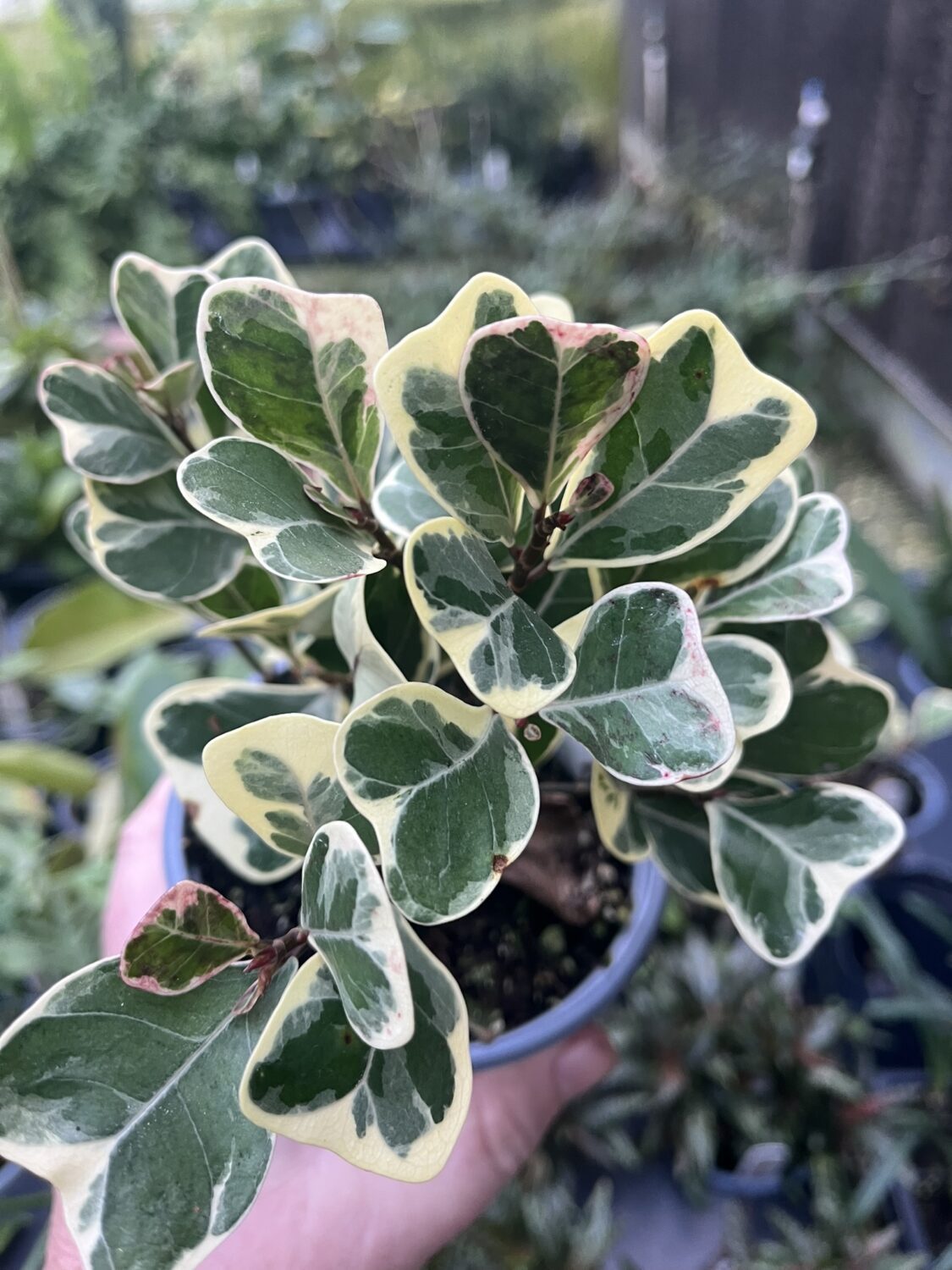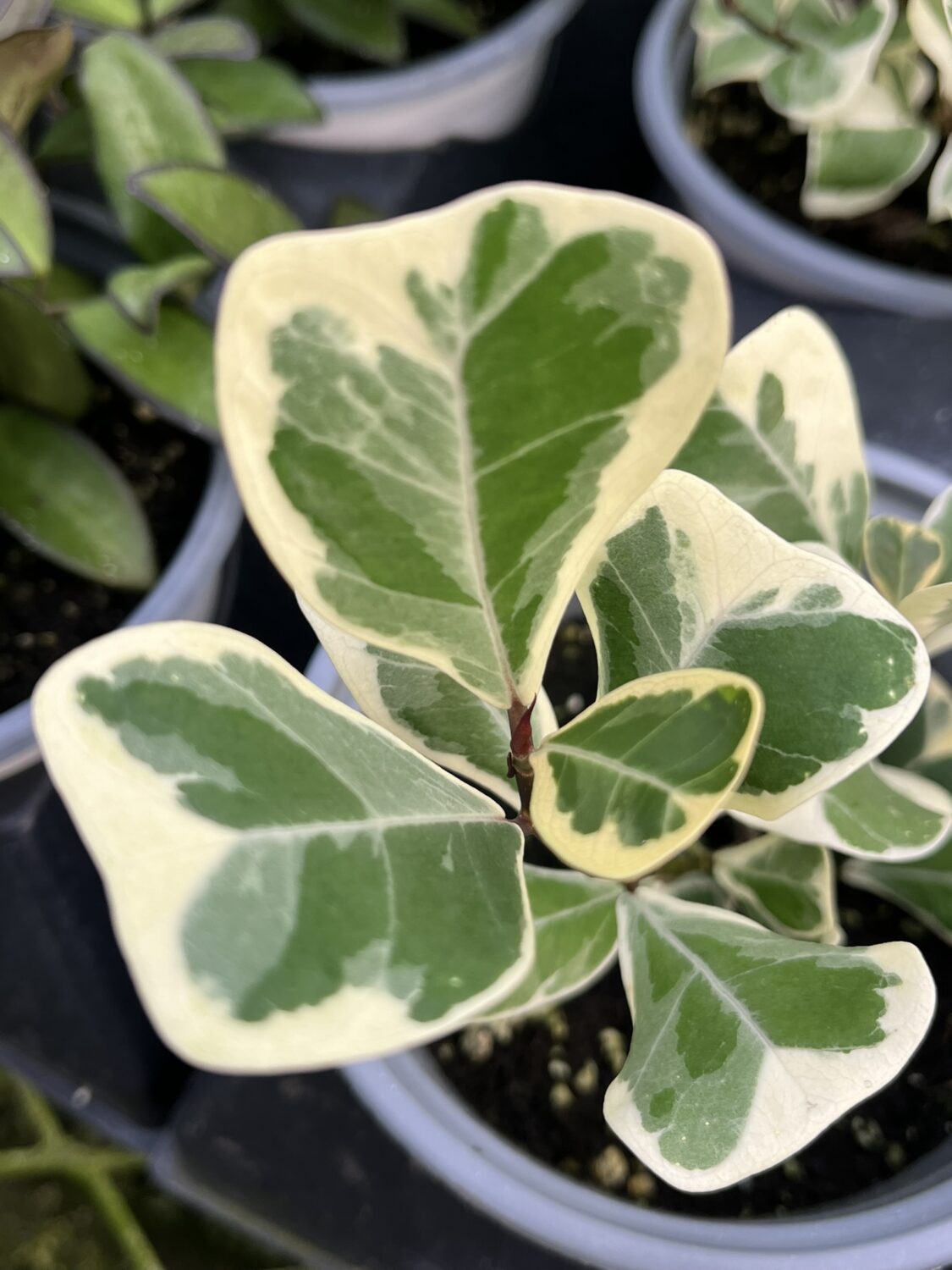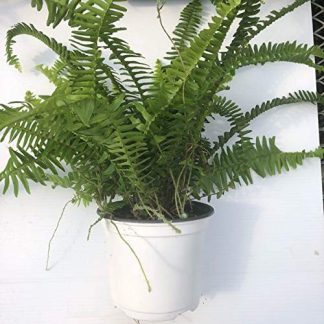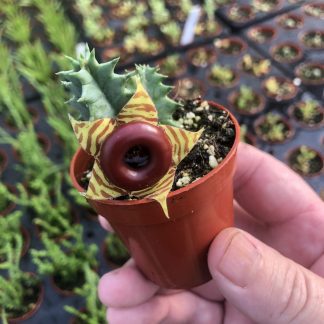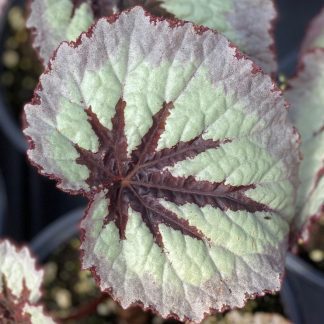Description
Ficus triangularis Variegated: How to Grow the Striking Triangle Fig Indoors
Ficus triangularis variegated, also known as the Variegated Triangle Fig, is a plant that instantly grabs attention. Its triangular leaves, edged in creamy white and filled with deep green centers, feel almost like artwork. This plant is more than just beautiful, though. It’s compact, slow-growing, and easy to care for, making it an excellent choice for both new plant lovers and seasoned collectors.
Native to tropical parts of Africa, this unique member of the Moraceae family adds a bold, modern look to any space. It fits easily on shelves, desks, or as a small statement plant in your living room. Even better? It’s known to help clean the air, making your home healthier and fresher.
Ready to learn how to care for this beauty? Let’s dive into everything you need to know to help your Ficus triangularis variegated thrive.
Why This Plant Stands Out
Not all ficus plants look alike, and this one proves it. While relatives like the fiddle-leaf fig grow tall and dramatic, the triangle fig offers compact growth and manageable care. Its glossy, geometric leaves give it a modern vibe that works well in minimalist or colorful spaces alike.
Because it grows slowly, you won’t have to repot it often or constantly prune it to control size. Instead, it rewards you with a steady display of bold, patterned foliage that looks good year-round.
Planting and Propagation
Propagation Basics
The triangle fig is most often propagated through stem cuttings. While it can be a slow grower, propagation is a fun way to grow more plants for your home—or to share with friends.
How to propagate step-by-step:
-
Choose a healthy stem with 2–3 leaf nodes.
-
Make a clean cut just below a node using sterilized scissors or shears.
-
Remove the lower leaves, leaving only the top leaves in place.
-
Dip the cut end in rooting hormone to encourage faster root growth.
-
Place the cutting in either:
-
Water: Change water every few days. When roots reach 1–2 inches, pot in soil.
-
Soil: Plant in a small pot with a well-draining mix and keep slightly moist.
-
-
Keep the cutting in bright, indirect light until new growth appears.
Light Requirements
This ficus loves bright, indirect light. Good light keeps its white-and-green variegation strong and vibrant.
-
Indoors: Place near an east- or south-facing window with filtered sunlight.
-
Outdoors: If you bring it outside in warm months, place it in a shaded patio or under dappled sunlight.
It can handle medium light but may lose some of its variegation and grow slower. Rotate the plant every few weeks to help it grow evenly on all sides.
Soil Needs
Like most ficus plants, this one dislikes “wet feet.” Well-draining soil is essential to avoid root rot.
Simple soil recipe:
-
2 parts all-purpose potting soil
-
1 part perlite or coarse sand
-
1 part peat moss or coconut coir
This mix provides good drainage and just enough moisture retention to keep the plant happy.
Watering Schedule
Consistency is key. The triangle fig likes moisture but doesn’t want soggy roots.
-
Check soil first: Water when the top 1–2 inches of soil are dry.
-
Growing season (spring–summer): Water more frequently as the plant is actively growing.
-
Dormant season (fall–winter): Reduce watering slightly.
Signs of trouble:
-
Yellowing leaves → likely overwatering.
-
Crispy brown edges → likely underwatering or low humidity.
Always use pots with drainage holes so excess water can escape.
Temperature and Humidity
This tropical plant enjoys warmth and moderate humidity.
-
Temperature range: 65–85°F (18–29°C)
-
Minimum temperature: Avoid anything below 50°F (10°C)
While it tolerates average home humidity, it thrives with extra moisture in the air. Mist occasionally, run a humidifier, or place it on a pebble tray to boost humidity.
Keep it away from cold drafts, heaters, and air conditioners, which can cause leaf drop.
Fertilizing for Healthy Growth
Feed your triangle fig regularly during its active growing months for lush foliage.
-
Use a balanced water-soluble fertilizer diluted to half strength.
-
Fertilize every 4–6 weeks from spring through summer.
-
Stop feeding in fall and winter when growth slows.
Pro tip: Flush the soil every few months to remove built-up fertilizer salts.
Pruning and Maintenance
Pruning keeps your plant looking neat and encourages fuller growth.
-
Trim leggy or overgrown stems with clean shears.
-
Remove yellow, damaged, or faded leaves.
-
Pinch back new tips to promote branching.
The cuttings you prune can also be propagated, giving you more plants to enjoy.
Common Pests and Problems
While fairly pest-resistant, triangle figs can occasionally attract:
-
Spider mites
-
Mealybugs
-
Scale insects
Treatment tips:
Wipe leaves with a damp cloth or use insecticidal soap or neem oil for infestations. Good airflow and regular leaf cleaning help prevent problems.
Disease prevention:
Overwatering is the biggest issue. Use well-draining soil, and don’t let the plant sit in standing water to prevent root rot.
Repotting
You won’t need to repot this ficus often. It grows slowly and enjoys being a little root-bound.
-
Repot every 2–3 years or when roots start circling the pot.
-
Choose a pot only 1–2 inches wider than the old one.
-
Refresh the soil at each repot to provide fresh nutrients.
When repotting, handle the roots gently—they can be sensitive to disturbance.
Extra Care Tips
-
Leaf cleaning: Wipe the leaves with a damp cloth to remove dust and help photosynthesis.
-
Stability: Avoid moving the plant frequently. Ficus plants dislike sudden changes and may drop leaves if stressed.
-
Seasonal care: If you place it outside for summer, bring it indoors before temperatures drop in fall.
Why You’ll Love Growing It
The Ficus triangularis variegated isn’t just another houseplant. It’s a living piece of art that rewards you with beauty and calm. Its unique leaf shape adds a modern flair, while its easy-care nature makes it perfect for busy plant parents.
Whether displayed as a centerpiece or tucked into a collection, this plant brings personality and elegance to your home. And with just a little attention—light, water, and warmth—you’ll enjoy its striking foliage for years to come.
A Lasting Touch of Green Beauty
Bringing a Variegated Triangle Fig into your space is like adding a quiet piece of nature’s art to your everyday life. It’s slow to grow, but steady in its charm. With minimal effort, it becomes one of those plants you can’t help but admire every time you pass by. If you’ve been searching for a plant that blends beauty, structure, and ease of care, this one checks every box.

